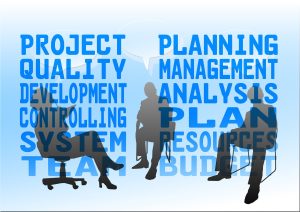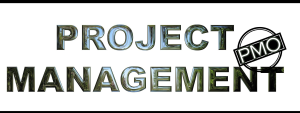
Delivering projects on time, within budget, and according to scope is no longer enough. What if every project your organization undertakes not only achieves its immediate goals but also delivers long-lasting, measurable value that directly enhances your bottom line. Welcome to value-based project management, a paradigm shift that’s redefining how PMOs (Project Management Offices) operate and contribute to organizational success.
The Limitations of Traditional Project Management
For decades, PMOs have focused on the “iron triangle” of project management: time, cost, and scope. While these metrics are still important, they don’t guarantee that a project will deliver real-world value. In fact, statistics reveal that up to 70% of projects fail to deliver their intended benefits, even when they meet traditional success criteria. This poses a crucial question: Is it worth investing in projects that don’t add value to the organization?
The reality is that businesses today require more than on-time project completion; they need tangible returns. As executives pore over impressive reports showing on-time and on-budget projects, the more critical question lingers: What value is actually being delivered?
From Process Guardians to Value Creators
The shift to value-based project management marks a profound transformation in how some PMOs operate today. The focus is no longer solely on project execution but on aligning every initiative with the strategic objectives of the organization. In essence, PMOs are evolving from administrative overseers to key drivers of business value.
Here are five essential strategies to help PMOs pivot from being process-driven to value-driven powerhouses:
1. Align Projects with Strategic Objectives
The most crucial step in implementing value-based project management is ensuring that every project directly contributes to the company’s long-term strategic goals. This involves:
- Creating a clear line of sight between projects and the organization’s overall vision.
- Reassessing project portfolios regularly to ensure ongoing alignment with strategic priorities.
- Empowering PMO leaders to challenge and reprioritize projects when they no longer contribute to organizational success.
By focusing on strategic alignment, PMOs can ensure that resources are being invested in projects that deliver significant business value.
2. Redefine Success Metrics
Success is more than meeting deadlines and budgets. To measure true project success, organizations must move beyond the traditional “iron triangle” and embrace value-centric metrics like:
- Return on Investment (ROI)
- Customer satisfaction scores
- Revenue impact
- Market share growth
These metrics provide a broader view of project success, better reflecting the long-term benefits and value delivered to the organization.
3. Cultivate a Value-Driven Culture
Transitioning to value-based project management requires a cultural shift throughout the PMO and the organization. Every team member, from project managers to developers, should understand and prioritize value creation. This shift can be encouraged by:
- Fostering a “why-first” approach where team members question the purpose and potential value of each initiative, with an agreed method for feeding those details up through the PMO.
- Celebrating value milestones, not just project completions, this helps to emphasize the importance of value delivery.
- Encouraging continuous value assessments, ensuring that value creation remains at the forefront throughout the project lifecycle and is regularly reviewed.
4. Embrace Adaptive Planning
Agility is essential for value creation in today’s dynamic business environment. PMOs must adopt adaptive planning methodologies, such as Agile, which allow for frequent reassessments of project value. This flexibility ensures that:
- Projects can pivot or be re-scoped to maximize value in response to changing conditions.
- Initiatives that no longer align with organizational goals can be quickly canceled or revised.
By embracing adaptive planning, PMOs can ensure that projects are always delivering the most value, even as circumstances change.
5. Master the Art of Value Communication
Value must not only be created but also effectively communicated to stakeholders. PMOs need to develop a compelling narrative around the value of each project, using data visualization and storytelling techniques to:
- Make value tangible to executives and stakeholders.
- Provide real-time insights into how projects are impacting the business.
- Demonstrate the return on investment and long-term benefits of project initiatives.
When value is clearly communicated, stakeholders can better appreciate the contributions of the PMO, and the organization as a whole becomes more value-driven.
Moving Forward: The Role of Data and Continuous Assessment
To fully embed value-based project management, organizations must leverage data analytics to support decision-making. Robust data tools can help:
- Forecast potential value outcomes, providing predictive insights to guide project planning.
- Identify patterns of value creation, allowing the PMO to optimize future project approaches.
- Track real-time value metrics, offering transparency and accountability to stakeholders.
Additionally, continuous value assessment ensures that value is being realized throughout the project lifecycle, not just at completion. Regular check-ins enable early identification of any value gaps, allowing for timely corrections and improved stakeholder engagement.







 The “Measure Twice and Cut Once” Approach
The “Measure Twice and Cut Once” Approach


 The Silent Disruptor – Why Lack of Trust is a Barrier to Success
The Silent Disruptor – Why Lack of Trust is a Barrier to Success